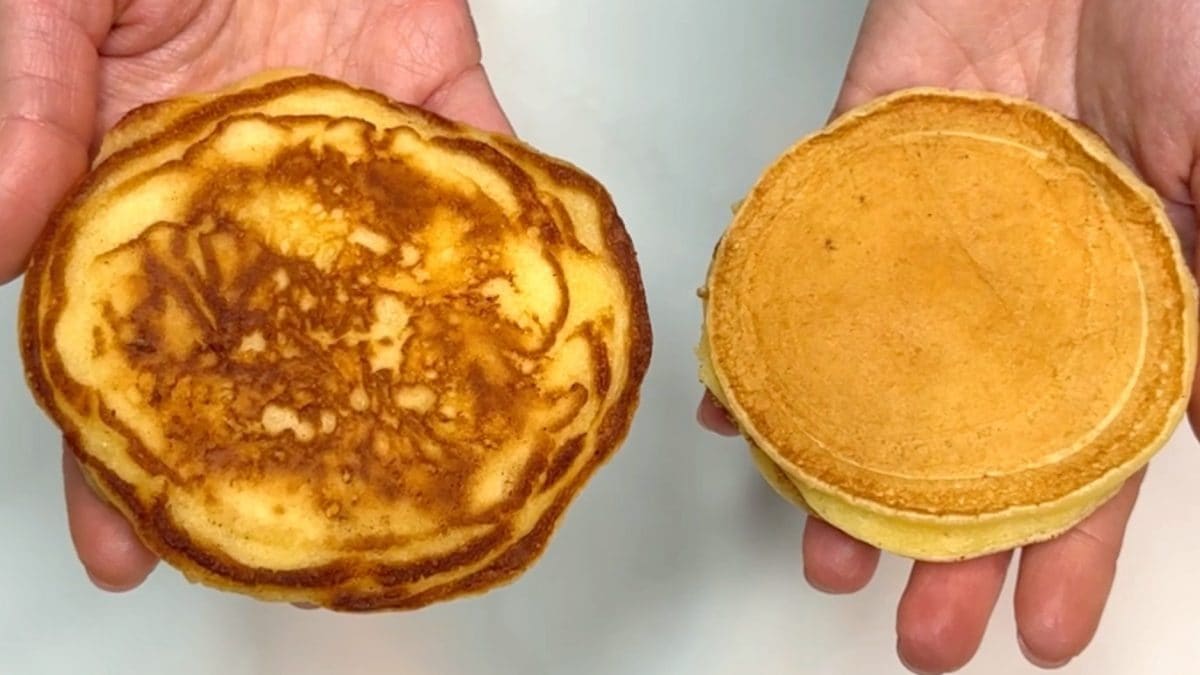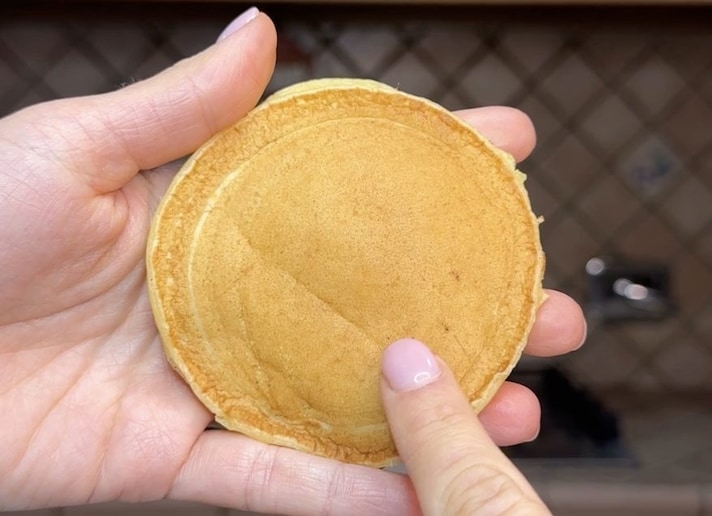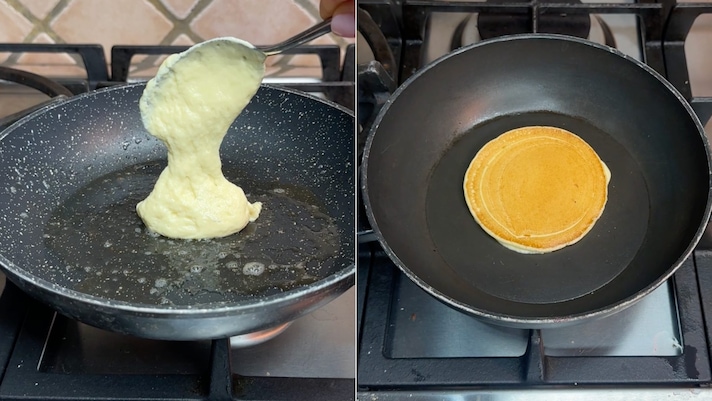
Have you ever wondered why pancakes made from the same batter can look so different? The key lies in how you cook them! Whether you use oil or butter, slight adjustments in the cooking method can create very different results. In this article, we’ll explain the science behind why pancakes cooked with oil come out smooth and even, while those cooked with butter develop a crispy, uneven texture. Let’s break it down!

Smooth Pancake (Cooked with Oil):
When you cook pancakes with oil, you’ll notice that the pancake comes out smooth, golden, and with a uniform appearance. This happens when:
- The pan is the right temperature: The pan should be hot but not too hot. Medium heat ensures an even cook without burning the batter.
- Minimal fat: A little oil is used just to grease the pan. Too much fat would create a greasy, uneven texture.
- Rested batter: If the batter has had time to rest, it will cook evenly, resulting in a soft, fluffy pancake with smooth edges.
The result is a soft, compact pancake with even browning and a consistent texture throughout.

Irregular Pancake (Cooked with Butter):
On the other hand, if you cook pancakes with butter, the result is often different, with a crispy, uneven appearance. This occurs when:
- More fat in the pan: Butter is usually applied more generously than oil, which leads to a crispy, golden-brown crust around the edges.
- Higher cooking temperature: The pan might be too hot, causing the batter to cook faster on the outside and not giving it enough time to cook through evenly.
- Thicker batter or immediate use: If the batter is thicker or hasn’t had time to rest, it can cause the pancake to have a less uniform texture.
As a result, the pancake will have a crispy edge, with darker spots and a more irregular shape.
The Science Behind the Difference
The reason why these two types of pancakes look and behave differently lies in how oil and butter react under heat.
- Oil: Vegetable oil has a higher smoke point than butter, which means it can handle higher cooking temperatures without burning. When you use oil, it forms a smooth, even layer on the pan, creating a uniform cooking surface. The pancakes cook evenly without burning or developing dark spots, resulting in a smooth, soft pancake.
- Butter: Butter, on the other hand, contains milk solids that burn at a lower temperature. As a result, when you cook pancakes in butter, the milk solids can brown and even burn, creating uneven patches on the pancake. The higher temperature also crisps up the edges more quickly, adding a crunchy texture to the outside of the pancake while leaving the inside softer.
Why Does This Matter?
Choosing oil or butter depends on your texture and flavor preference. Here’s a quick rundown of the differences:
- Oil-Cooked Pancakes: These pancakes are smooth, soft, and uniform, with a subtle flavor that lets your toppings shine. Ideal for those who prefer even, fluffy pancakes with consistent texture.
- Butter-Cooked Pancakes: These pancakes have a richer flavor with crispy, golden-brown edges and a more rustic appearance. Perfect for those who enjoy a slightly uneven texture with added buttery richness.

Oil or Butter for Pancakes?
Both oil and butter have their unique benefits and can produce delicious pancakes, but the method you choose will affect the outcome. If you prefer smooth, even pancakes with fluffy texture and lightness, oil is the way to go. However, if you love rich, buttery flavor with crispy edges and a bit of a rustic, uneven look, butter is your best option.
Next time you make pancakes, try both methods and see which one works best for you! Experiment with heat levels, fat amounts, and batter consistency to find your perfect pancake style.

;Resize,width=767;)
